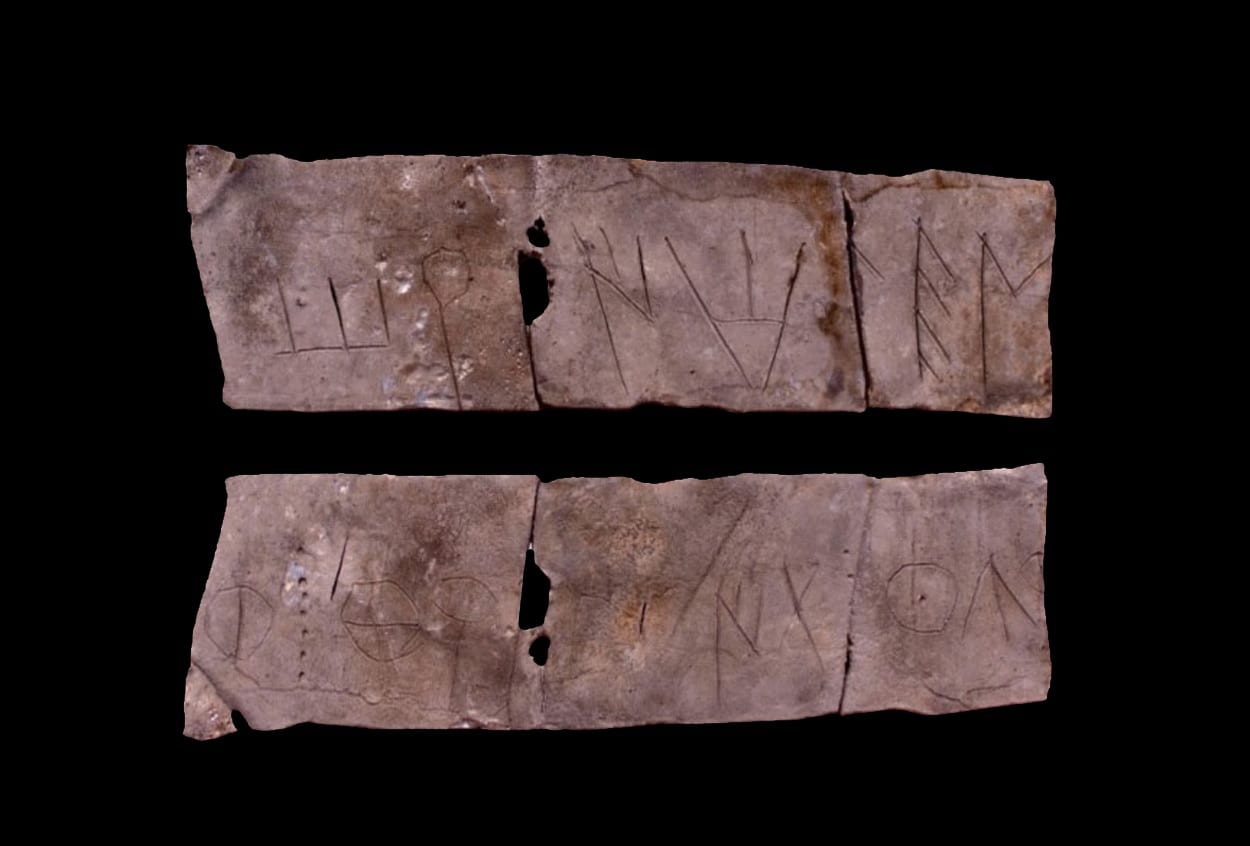A multidisciplinary research team from the University of Valencia (UV), the Prehistory Museum of Valencia (MPV) and the University of Barcelona (UB) has published a study detailing their discovery and interpretation of a lead plate with Iberian writing, the first one obtained in a regulated excavation in Pico de los Ajos (Yátova), one of the most important Iberian sites.
The sheet is inscribed with archaic writing and an unknown theme that has been phonetically transcribed, advancing our knowledge of Iberian culture. Many of the known lead sheets come from looting and not from regulated excavations. The plate represents one of the few and the first from this site to be obtained in an excavation within a known context, both temporal and spatial.
The lead plate was found bent and has writing on both sides forming a single text, with specialists being able to identify Iberian symbols written between the fourth and third centuries BC, while other similar plates generally date back to later centuries.
“This site has one of the largest sets of texts written in Iberian on the entire peninsula”, says David Quixal. The sheets of lead used as writing support are relatively common in the deposits of the Iberian culture. The Pico de los Ajos, a town located in the town of Yátova, was inhabited at least since the 7th century BC and was later abandoned between the first century BC and the first century AD.
Although it has been studied phonetically, the message contained in the plate is still not clear, and neither is the context in which it should be placed. The researchers have ruled out any relation to a commercial or administrative nature, suggesting that it may be a religious text. The team have identified the name of a person within the text called “tořaibeleś”, who may have been the author of the text or commissioned the writing.
“Iberian is a language that still cannot be translated, but which experts are making gradual progress to identify words to interpret what type of texts they were”, explains David Quixal, professor of Archaeology and one of the authors of the article.
Header Image Credit : Asociación RUVID







